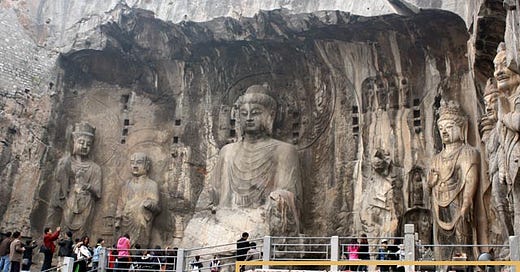Ep. 009: The Grottoes at the Dragon Gate
A stroll through the Longmen Grotto complex in Henan, China
In early November of 2011 I was still whanging away at my list of 142 Chinese Buddhist temples designated by the central government (back in 1983) as being of special significance, and worthy of development (and promotion). I had a couple of weeks off from my teaching job and planned a five-day trip to Henan Province, where I intended to see Baima (White Horse) Temple, said to be the first Buddhist temple ever founded in China; and the world-famous--and trademarked--Shaolin Temple, known to many older Americans as the home of David Carradine's Kung Fu. As luck would have it, my wife Lila (who worked at the same school as I), had the same days off, and was able to tag along. (Our students had gone off for their yearly military training, where--if they wanted to fire live rounds--they had to pay for the bullets.)
In addition, we visited a site that was nothing short of spectacular.




